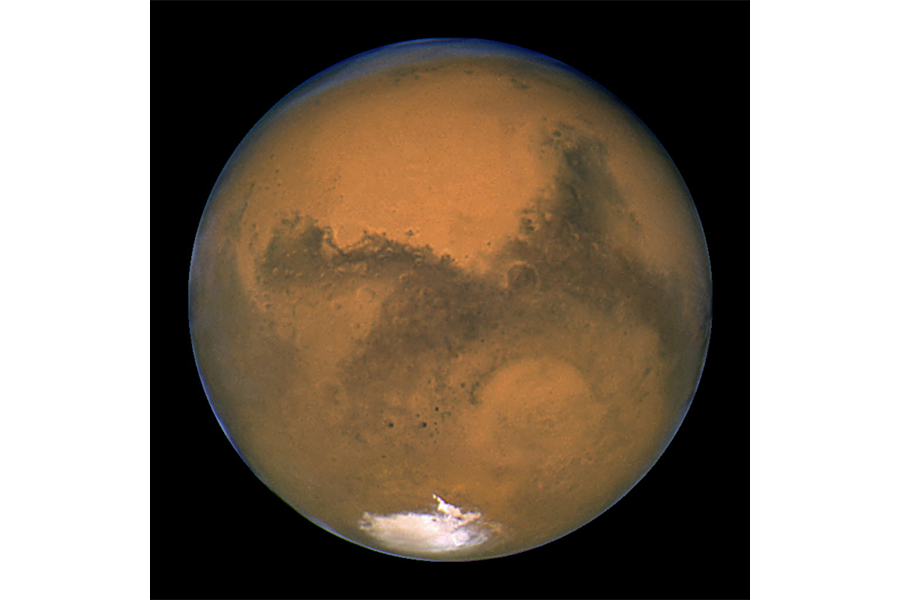Oxygen in Martian atmosphere? Yes, but don't get too excited yet.
Loading...
There's atomic oxygen in Mars' upper atmosphere, say NASA scientists.
That doesn't mean there's life down on the surface of the Red Planet. Atomic oxygen is not the same thing as the oxygen we breathe. The oxygen that we survive on is two oxygen atoms linked to form O2 , while atomic oxygen is a single oxygen atom.
But atomic oxygen does a play key role in the Martian atmosphere, so understanding its abundance could help answer other questions about the Red Planet.
Just about half the amount of oxygen expected was detected, but the scientists suggest that might be explained by variations in the Martian atmosphere.
The researchers detected the atomic oxygen from Earth, from an instrument onboard a Boeing 747SP specially modified to be a sort of flying observatory. The craft, called the Stratospheric Observatory for Infrared Astronomy (SOFIA), flew between 37,000 and 45,000 feet over the Earth, above much of the moisture in our planet's atmosphere that would have blocked the the signals the scientists were looking for.
"Atomic oxygen in the Martian atmosphere is notoriously difficult to measure," Pamela Marcum, SOFIA project scientist, said in a NASA press release. "To observe the far-infrared wavelengths needed to detect atomic oxygen, researchers must be above the majority of Earth’s atmosphere and use highly sensitive instruments, in this case a spectrometer. SOFIA provides both capabilities."
This wasn't the first time scientists have detected atomic oxygen in Mars' atmosphere. Four decades ago the Viking and Mariner missions also made similar measurements.
This atomic oxygen may hold clues into how Mars has changed in the solar system's history. Scientists think the Red Planet wasn't always the cold, rust-colored, dry desert it appears to be today. Instead, researchers have suggested that it was much wetter and perhaps more conducive to microbial life, supported by an oxygen-rich atmosphere.
To explain how Mars changed, some scientists have proposed that the atmosphere eroded over time, perhaps thanks to strong solar storms and solar winds.
In that explanation, streams of charged particles from the sun would have split water and carbon dioxide molecules into their atomic parts. As separate atoms, it would be more likely that these pieces could hurtle off into space. Hydrogen, the lightest of the bunch, would have floated off most easily. But oxygen that was energized by photochemical reactions could have also been extended away from the planet's gravitational pull enough to be stripped away as well.
Today, "atomic oxygen affects how other gases escape Mars and therefore has a significant impact on the planet’s atmosphere," according to the NASA press release.






